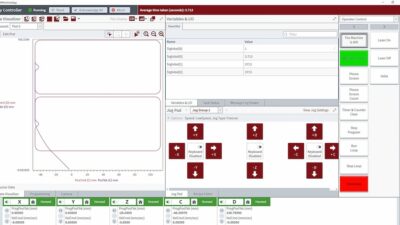"The only purposeful way we have to influence life is through our decision-making. Unfortunately, we don't treat decision-making as the skill it is," says Ralph Keeney, business and systems engineering professor, Center for Telecommunications Management, University of Southern California (Los Angeles, Calif.
“The only purposeful way we have to influence life is through our decision-making. Unfortunately, we don’t treat decision-making as the skill it is,” says Ralph Keeney, business and systems engineering professor, Center for Telecommunications Management, University of Southern California (Los Angeles, Calif.). “Decision-making can be learned just like any other skill. It’s like learning tennis. There the various elements are defined and taught, each one is practiced, then all elements are put together to play in a match.”
Dr. Keeney, John Hammond, and Howard Raiffa are the authors of Smart Choices: A Practical Guide to Making Better Decisions (Harvard Business School Press, Boston, Mass.). The book defines eight elements of sound decision-making, offers application examples, and practical advice for practice.
Dr. Keeney has helped engineers and engineering managers enhance decision-making skills. He says there are five major shortcomings in making correct decisions.
The first obstacle is working on the wrong problem. For instance, engineers often think about what job they’re doing, rather than what career they should have. If you look at engineering as a career, you’ll make choices to grow and improve in your career. If you just see your job as designing controls, your choices will be limited to looking from job to job, instead of seeking to enhance your career objectives.
Clarify objectives, alternatives
The next shortcoming is failing to lay out objectives. What was the objective of that first position? Maybe the first objective was a good salary. Subsequent objectives may change over time. For instance, an objective for someone with a young family is to have a position that doesn’t negatively impact family responsibilities. Later in life, an objective may be increasing your scope of responsibilities within the company. Properly defining objectives can focus responses to questions about the value you can bring to a new position.
Thirdly, people too frequently accept the set of alternatives offered rather than create new alternatives. Look at defined objectives and ask, “How can I achieve the objectives I’ve set?” Challenge constraints. Some constraints are real, but some are only assumed. An assumed constraint is mental. To break it, try assuming that a constraint doesn’t exist and create alternatives that reflect its absence. If the result is attractive, maybe there is a way to make it happen.
The fourth shortcoming lies in not recognizing invisible factors, or circumstances generated elsewhere. If the market is not buying the company’s products, this could create problems for individual engineers. Ask yourself early in the position, “How can I improve my skills to help the firm?” Learning the right skills helps both you and the company. If the company needs to cut personnel, new skills may enable you to keep or enhance your position. You may be able find a new position more readily. You can make a wiser decision based on better alternatives.
Think carefully
Finally, many people just don’t carefully think their decisions through. Thinking is hard work and causes uncertainty and worry. Making a quick decision is easier and ends uncertainty. Overcome this tendency and ask yourself, “What are the changes that could happen in the world that could impact me?” Then use the skills of defining the right problem, setting objectives, and looking at alternatives to make the wise decision.
Smart Choices is filled with practical examples of decision-making, both in business and personal situations. Tips for practicing each skill are in each chapter. Making good decisions is a skill. Begin practicing today. For more information, visit www.controleng.com/info .
Author Information
Gary Mintchell, senior editor, [email protected]
Eight Elements of Smart Choices
Problem
Objectives
Alternatives
Consequences
Tradeoffs
Uncertainty
Risk tolerance
Linked decisions
Source: Control Engineering with data from “Smart Choices, A Practical Guide to Making Better Decisions,” Harvard Business School Press.



